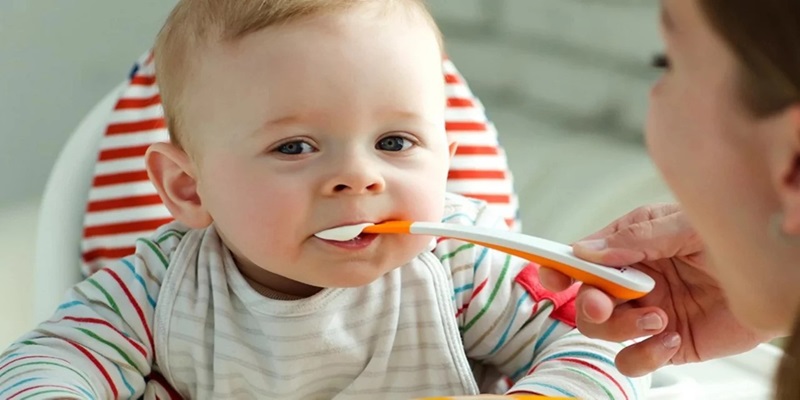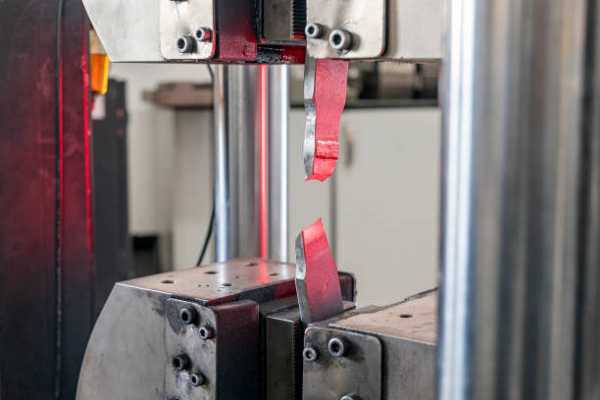How To Identify And Treat Food Allergies In Babies
Identifying babies' allergies can significantly impact their comfort and long-term well-being. You may wonder how to detect food allergy symptoms in your baby, especially when it first begins introducing foods into its diet. A general awareness of common symptoms, risk factors, and proper actions to follow can allow you to detect potential allergies early and seek appropriate medical consultation.
Identifying babies' allergies can significantly impact their comfort and long-term well-being. You may wonder how to detect food allergy symptoms in your baby, especially when it first begins introducing foods into its diet. A general awareness of common symptoms, risk factors, and proper actions to follow can allow you to detect potential allergies early and seek appropriate medical consultation.
The Common Food Allergies In Babies

The Big Eight
Some foods in baby food allergies have a greater chance of eliciting a reaction in babies than others. The "Big Eight" foods cause about 90% of allergies. These foods include milk, eggs, peanuts, tree nuts, fish, shellfish, soy, and wheat. Allergy to cow's milk is most prevalent during infancy, and it can occur in 3% of babies during infancy in a first-year life span.
Emerging Allergens
Though most prevalent, foods such as sesame, a new "major," have become an emerging allergen in America. Others include fruits such as avocado and kiwi, legumes such as lentils, and foods with chickpeas.
Age-Related Patterns
Be aware that food allergies occur at various ages in babies. Milk, egg, and allergy to soy develop early in life and can outlast them often. Allergy to peanuts, tree nuts, fish, and shellfish develop later and have a high propensity for lasting into adults' lives. Consult your doctor first, and then introduce foods with a high propensity for allergy into your baby's menu.
Early Symptoms And Signs Of Allergy
Symptoms That Show Immediately
When introducing foods to your baby, monitor for immediate allergic reaction symptoms. Symptoms can arise in a matter of a few minutes but in a matter of several hours, too. Symptoms include difficulty Breathing, face and lip swelling, and outbursts of hives. Vomiting and diarrhoea soon follow, and consuming an allergic food.
Delayed Symptoms
Some allergy symptoms will not arise for several days, actually, days. Delayed symptoms are sometimes easier to overlook. Monitor for eczema, persistent diarrhoea, and poor weight gain in your baby. Babies can become fussy, have sleep disturbances, and have abdominal discomfort, too.
Skin Reactions
Skin symptoms can be the most apparent symptoms of a baby food allergy. Monitor for unexplainable rashes in and around the mouth and diaper area. Eczema that flares with eating specific foods can mean your baby is allergic. Not all symptoms of the skin will necessarily represent a food allergy, but monitor them and report them to your baby's doctor anyway.
Respiratory And Digestive Issues
Symptoms of an allergy can arise in your baby's gastrointestinal and pulmonary function. Monitor for wheezing, persistent coughing, and nasal obstruction following meal times. Gastrointestinal symptoms can occur with excessive gas, constipation, and blood in stool. These symptoms can have numerous alternative explanations, but at least monitor them about your baby's diet.
Diagnosing Allergies In Babies

Knowing The Symptoms
When it comes to diagnosing baby allergies, care must prevail. Look for common symptoms, frequently appearing minutes to an hour or two after a meal. Symptoms include rash and eczema in the skin, vomiting, gastrointestinal diarrhoea, wheezing, and difficulty Breathing in the respiratory system. Babies become fussy in a few cases and puff about their mouths and faces in a few instances.
Medical Diagnosis And Testing
Seek your baby's physician's care at the first sign of a suspected allergy. The doctor may have your baby maintain a careful record of foods consumed and any symptoms developed in a food diary. Physical examination and family allergy background information will perhaps follow, and for a definite analysis, your doctor will possibly prescribe specific tests:
Skin tests: Tiny drops of suspected allergy-containing foods are placed in a small puncture in the skin to monitor for reaction.
Tests through blood: Blood tests evaluate for specific allergy-related antibodies.
Oral food challenge: A small portion of suspected foods are taken under observation for reaction under the doctor's supervision.
Interpreting Test Results With Caution
Keep in mind that even tests sometimes don't paint a complete picture. False positives sometimes occur, and babies sometimes outgrow an allergy. The doctor will use your baby's symptoms, medical background, and test results to properly analyze and develop an appropriate care plan.
Treating And Managing Baby Food Allergies

Elimination And Reintroduction
The suspected allergy to food is first addressed with an elimination diet when suspected. Remove suspected food for 2-4 weeks and, if symptoms lessen, introduce it under medical supervision to confirm allergy, specific triggers, and proper nutrition.
Creating a Safe Environment
Once allergies are identified, creating a safe eating environment is crucial. Read food labels carefully, as allergens can hide in unexpected places. Always inform others about your baby's allergies when dining out or at social gatherings. Consider wearing a medical alert bracelet for your child to ensure quick identification in emergencies.
Introducing New Foods Safely
When introducing new foods, follow the "4-day wait" rule. Offer a single new food and wait four days before introducing another. This method helps isolate potential allergens if a reaction occurs. Start with small amounts and gradually increase if no adverse reactions are observed.
Transitioning Babies With Allergies To Solid Foods
Introducing solid foods to a baby with known allergies requires extra care and planning. Here's how to navigate this critical milestone safely:
Start With Low-Risk Foods
Begin the transition with foods that are least likely to cause allergic reactions. Rice cereal, pureed vegetables like sweet potatoes or squash, and fruits like bananas or pears are often good choices. Introduce new foods one at a time, waiting 3-5 days between each new item to watch for any reactions.
Consult Your Pediatrician
Before starting solids, consult your paediatrician for personalized advice. They may recommend specific foods to avoid or suggest an order for introducing potentially allergenic foods based on your baby's needs.
Consider Texture And Consistency
For babies with allergies, texture can be as important as ingredients. Start with smooth purees and gradually progress to thicker consistencies as your baby becomes more comfortable with solids. This approach helps minimize the risk of choking while allowing you to monitor for allergic responses closely.
Keep a Food Diary
Maintain a guarded record of foods your baby tests, when, and any reaction noticed. This information can best serve you in reporting and identifying triggers to your paediatrician and following foods added successfully without issue.
Staying Vigilant: Your Role In Early Allergy Detection
Your role as a responsible observer in early allergy detection in your baby is essential. Moving with new foods at a slow and guarded pace, guarded observation for symptoms, and guarded record can detect a potential allergy early. Don't forget to seek your paediatrician's expert guidance in case of suspected allergy and have them prescribe proper tests when necessary. With a guarded eye and timely intervention, your baby can enjoy a safe and healthy future with food allergies avoided.
How do you like this article?





 Latest Posts
Latest Posts





